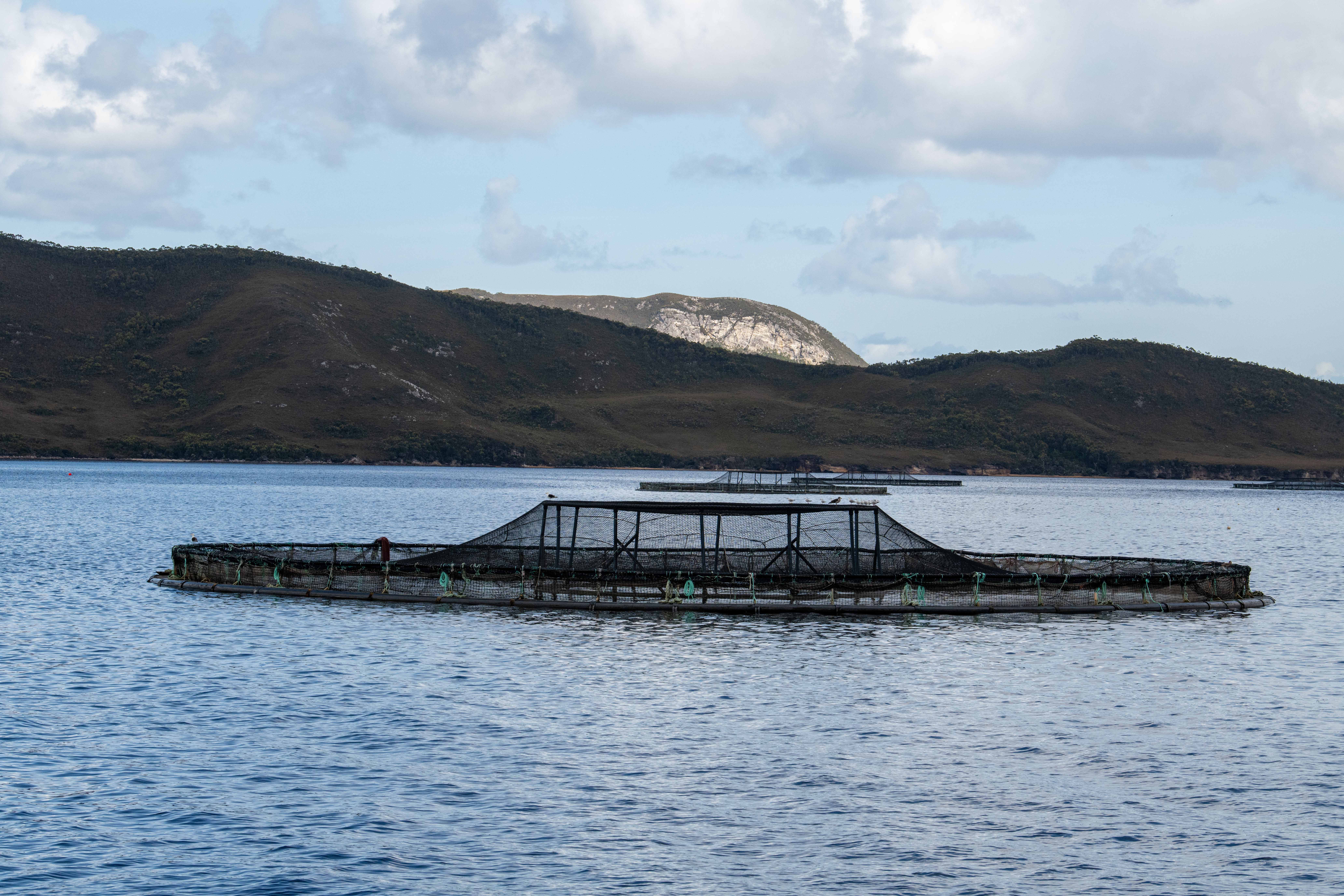Tasmania salmon farms ‘not harming environment’, study finds

A recent research project has found that the expansion of salmon farming around Storm Bay, Tasmania has had little or no adverse environmental impact.
The survey was carried out by the Institute of Marine and Antarctic Studies (IMAS) and supported by the Australian Government’s Fisheries Research and Development Corporation (FRDC). It was commissioned after environmentalists and other had expressed concerns about the effect of aquaculture in the Storm Bay area, which has been earmarked for further salmon farming growth.
Professor Jeff Ross, the study’s principal investigator, said that because Storm Bay is fairly new to aquaculture development it was important to carry out an early investigation.
He said: “The monitoring programme is tailored for a range of habitats, both in the direct vicinity of the leases and more broadly across Storm Bay – so it improves how environmental responses are measured and evaluated, and how the government manages the environmental effects of salmon farming in this waterway.
“It’s enabled us to assess the condition of important inshore and deep reefs, soft sediment and seagrass habitats across Storm Bay – and we’ve found they are healthy, biodiverse and show no evidence of adverse effects from aquaculture inputs.
“This has created an important reference point which we can assess environmental performance against, as the industry develops in the Bay.”
Storm Bay was identified as a priority area for the expansion of salmon aquaculture in Tasmania due to its high-energy environment, which allows for nutrient dispersal and more diffuse effects than areas with lower water movement.
The research focused on the environmental conditions and health of the sediments and vast water column, across an extensive array of active sites, extending from the pens out to distances of 1.5 km in all directions.
This was carried out during the peak stocking period to maximise the chance that any adverse effects would be apparent.
Based on nearly four years of data collected across all key habitats, the study team made recommendations about how and where water quality should be measured to assess the potential impacts from farming. They also highlighted the importance of official ecosystem models and decision support for understanding the drivers of change, and suggested further refinements for the Storm Bay Observing System, such as exploring the use of environmental DNA monitoring.
“There can be little doubt that the current Storm Bay monitoring programme is comprehensive for the habitats sampled, the parameters measured and the spatial and temporal scales it covers,” Professor Ross said.
Luke Martin, CEO of industry body Salmon Tasmania said: “According to the report, these habitats are deemed healthy, biodiverse, and exhibit no evidence of adverse effects from aquaculture inputs.
“Storm Bay’s high-energy environment, facilitating nutrient dispersal and diffuse effects, positions it as a prime area for sustainable salmon aquaculture expansion.”
“The FRDC, in recognising the significance of this environmental monitoring, has invested over $10 million [£5.2m] in collaboration with IMAS and CSIRO [the Commonwealth Scientific and Industrial Research Organisation, Australia’s national scientific research body] scientists to ensure the development of a responsible and sustainable industry in the region”.

